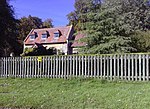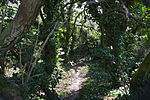Akeley, Buckinghamshire
Buckinghamshire geography stubsCivil parishes in BuckinghamshireOpenDomesdayUse British English from August 2019Villages in Buckinghamshire

Akeley is a village and civil parish in north-west Buckinghamshire, England. The village is on the A413 road, between Lillingstone Dayrell and Maids Moreton, and around 2.5 miles (4 km) north of Buckingham. The 2011 Census recorded the population of the parish as 514, down from 545 at the 2001 Census.
Excerpt from the Wikipedia article Akeley, Buckinghamshire (License: CC BY-SA 3.0, Authors, Images).Akeley, Buckinghamshire
Main Street,
Geographical coordinates (GPS) Address Nearby Places Show on map
Geographical coordinates (GPS)
| Latitude | Longitude |
|---|---|
| N 52.033 ° | E -0.97 ° |
Address
Main Street
Main Street
MK18 5HP , Akeley
England, United Kingdom
Open on Google Maps









